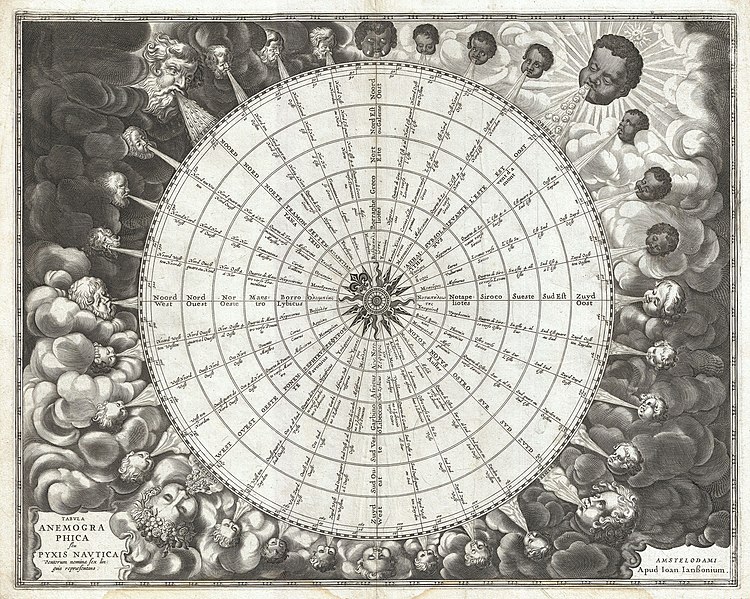Αρχείο:1650 Jansson Wind Rose, Anemographic Chart, or Map of the Winds - Geographicus - Anemographica-jannson-1650.jpg

Μέγεθος αυτής της προεπισκόπησης: 750 × 599 εικονοστοιχεία . Άλλες αναλύσεις: 301 × 240 εικονοστοιχεία | 601 × 480 εικονοστοιχεία | 961 × 768 εικονοστοιχεία | 1.280 × 1.023 εικονοστοιχεία | 2.560 × 2.045 εικονοστοιχεία | 5.000 × 3.995 εικονοστοιχεία.
Εικόνα σε υψηλότερη ανάλυση (5.000 × 3.995 εικονοστοιχεία, μέγεθος αρχείου: 7,38 MB, τύπος MIME: image/jpeg)
Ιστορικό αρχείου
Κλικάρετε σε μια ημερομηνία/ώρα για να δείτε το αρχείο όπως εμφανιζόταν εκείνη τη στιγμή.
| Ώρα/Ημερομ. | Μικρογραφία | Διαστάσεις | Χρήστης | Σχόλια | |
|---|---|---|---|---|---|
| τελευταία | 20:51, 23 Μαρτίου 2011 |  | 5.000 × 3.995 (7,38 MB) | BotMultichillT | {{subst:User:Multichill/Geographicus |link=http://www.geographicus.com/P/AntiqueMap/Anemographica-jannson-1650 |product_name=1650 Jansson Wind Rose, Anemographic Chart, or Map of the Winds |map_title=Tabula Anemographica seu Pyxis Nautica Ventorum Nomina |
Συνδέσεις αρχείου
Τα παρακάτω λήμματα συνδέουν σε αυτό το αρχείο:
Καθολική χρήση αρχείου
Τα ακόλουθα άλλα wiki χρησιμοποιούν αυτό το αρχείο:
- Χρήση σε de.wikipedia.org
- Χρήση σε nl.wikipedia.org
